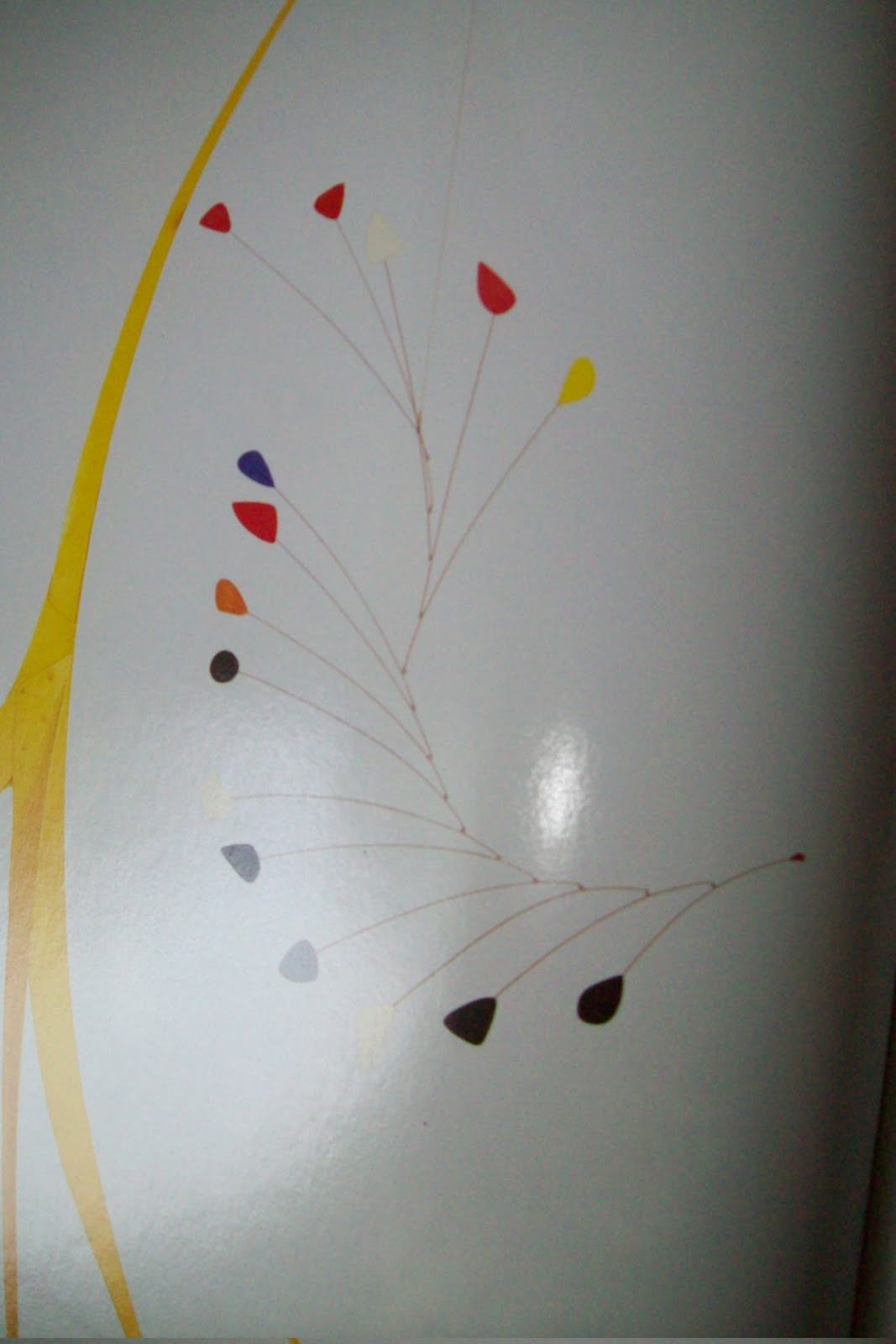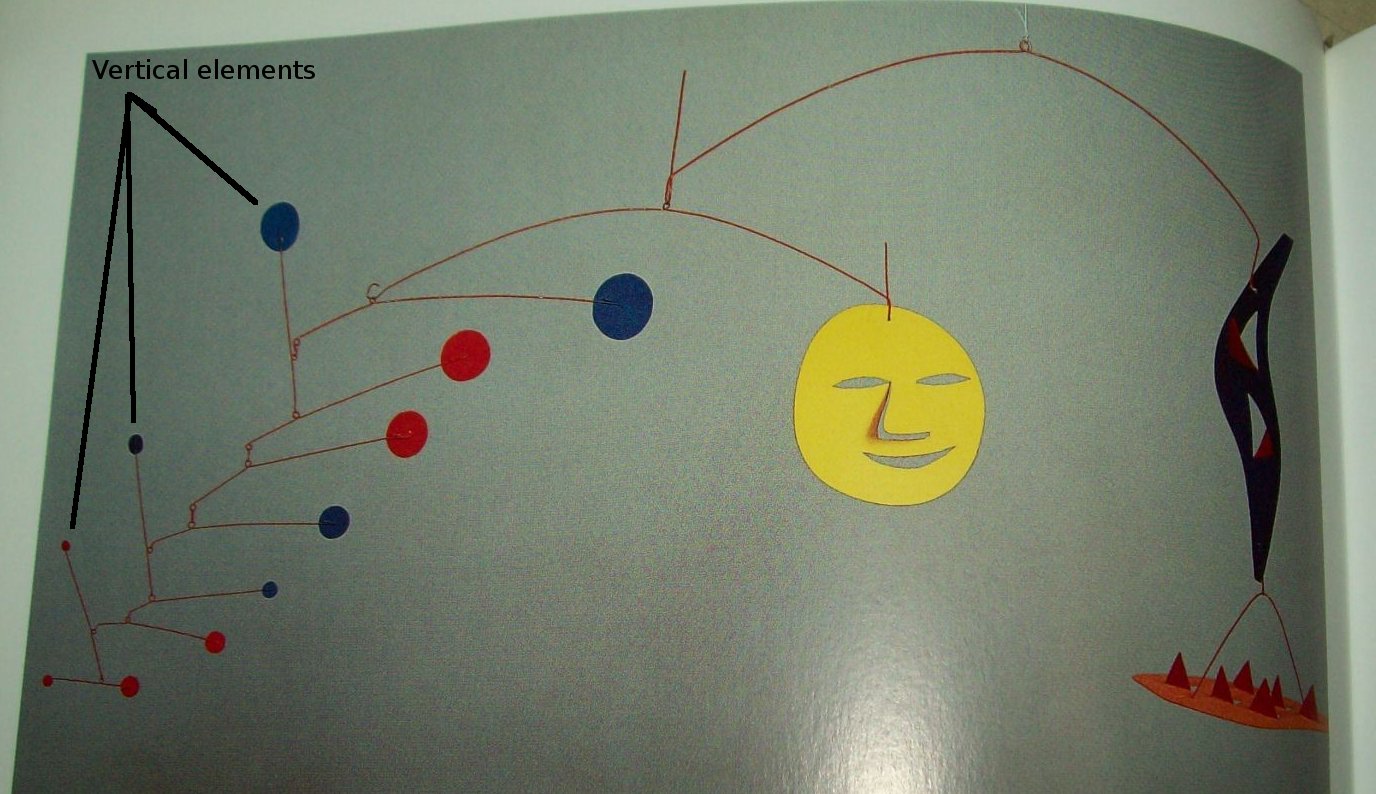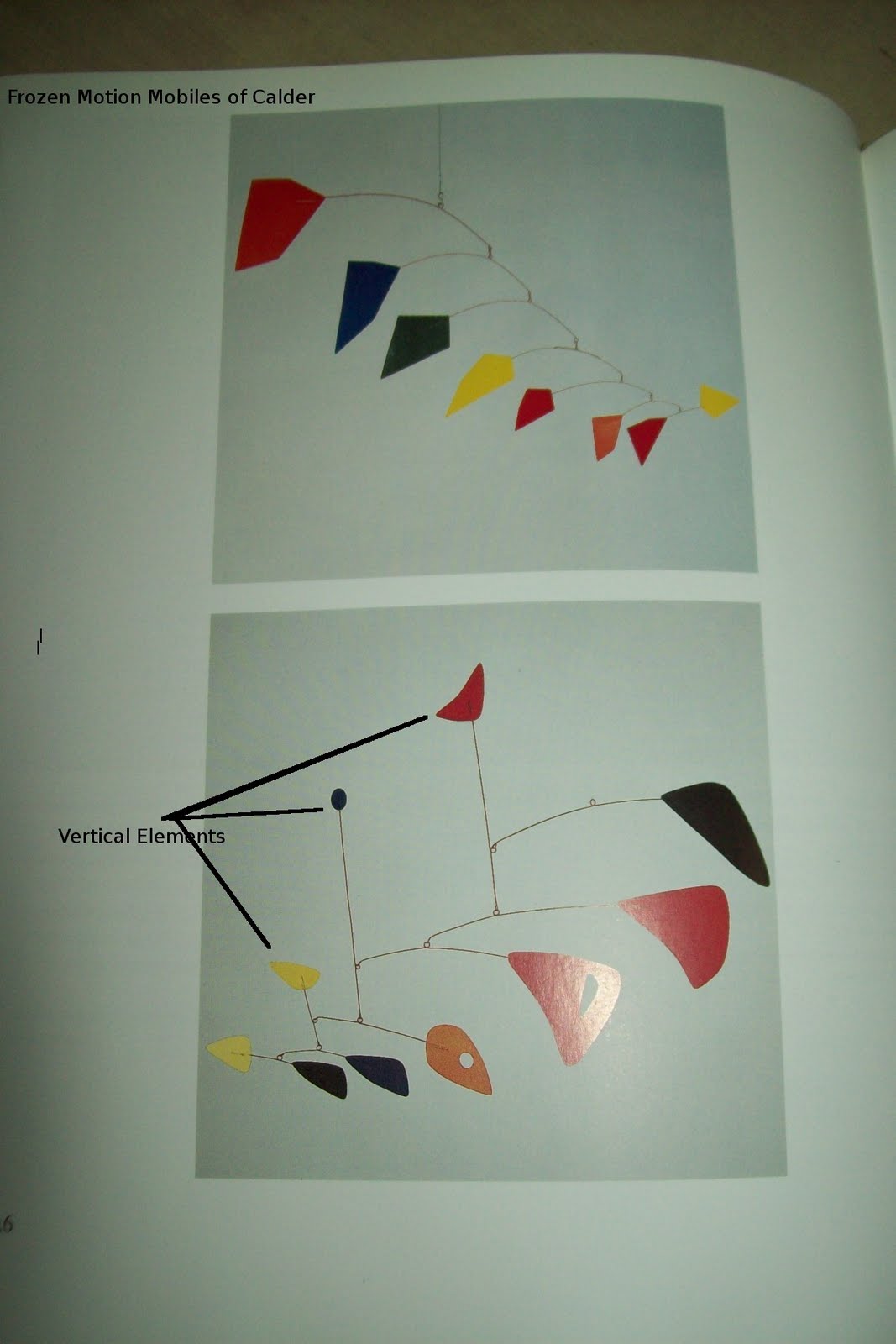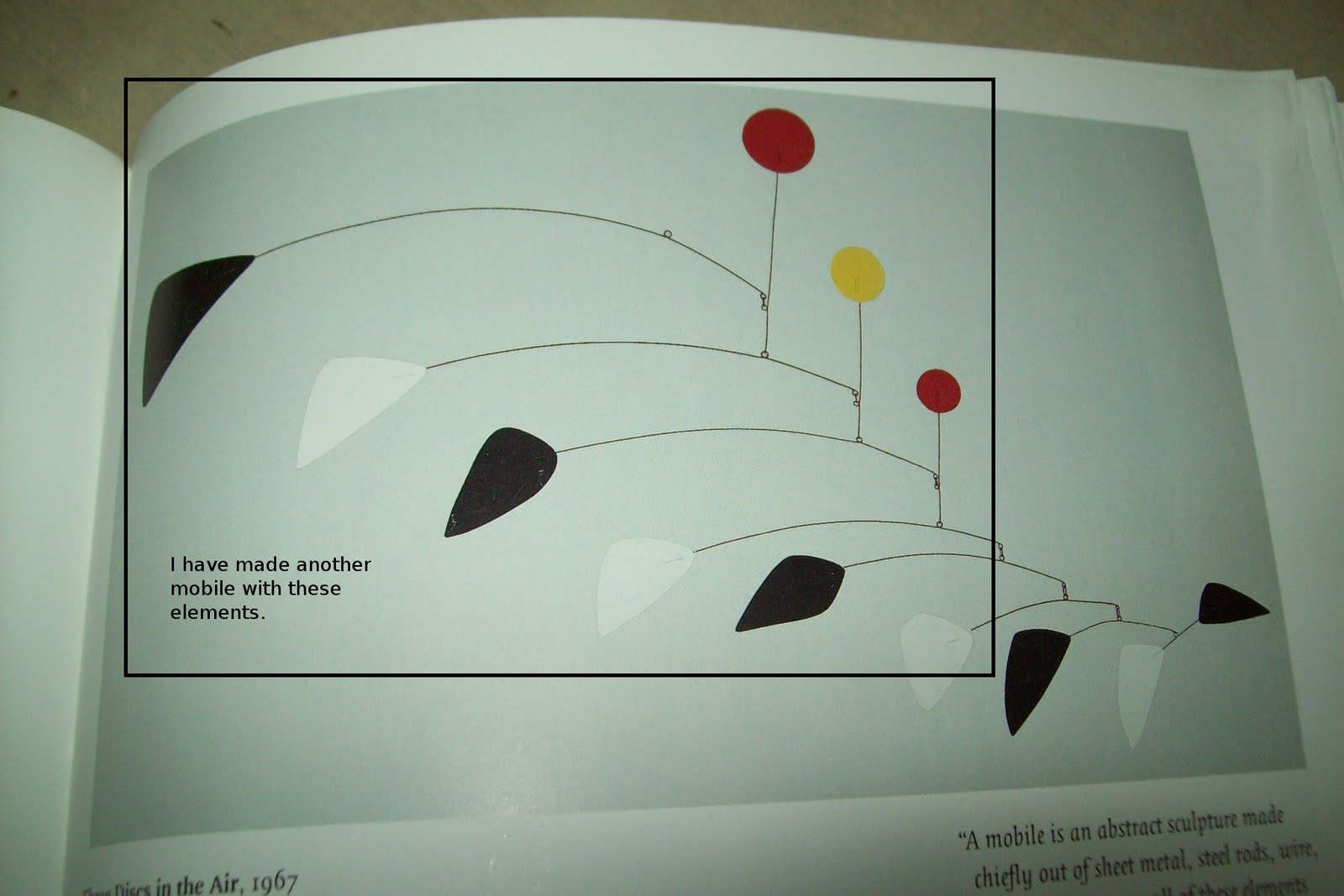Frozen Motion
I have been making various sorts of mobiles for over 35 years now.
I learnt the art of balancing forks and spoons over the edges of cups and glasses at home.
When I was living as a bachelor in Calcutta, I found a book on Calder's mobiles at one of the book fairs there. Reading that book, I got more seriously into making mobiles.
My understanding of his mobiles has increased greatly nowadays.
Previously, there was a class of mobiles that he made where the parts did not have freedom to move in relationship to each other.
In the past I never understood what Calder was trying to achieve through such mobiles that moved only as a whole. I used to reject such construction and changed the joints (made them with strings instead of metal hooks and loops) so that each part could freely rotate vis-a-vis other parts. Obviously they looked like Calder mobiles only once in a blue moon.
In 2009 I purchased some hand-working metal tools. I had not purchased them earlier as I was able to get away with the thread trick. I practiced making loops and hooks in metal wire and tried to make mobiles that way. Some learning occurred but not much.
I also acquired two more books on Calder. I tried to copy a Calder model from one of the books and failed completely. The key aspect, vertical elements, just did not stay up! How do you balance vertically?!
But by this time I had learnt that it was okay to fail and probably better to plan to fail in the first attempt.
I decided to make a mobile that looks like Calder's but the design is like my own.
 Calder mobile
Calder mobile
The model has 15 elements. They are grouped in three parts. At the bottom are five elements that are closely linked to each other and go UP in a 'C' shape instead of coming down. There is a middle group of five elements that curves against the direction of the lower five. Finally the top 5 are vertical elements that go directly up!
Since I had never learnt how to make the vertical elements I conveniently decided to make a model with only 10 lower and middle elements.
One argument that I gave to myself was that the mobile had to be dismantled and re-assambled elsewhere, so the top five elements would make it difficult to re-assemble. A poor excuse, as you can see straight away.
I decided to put the nodes in my own style and not copy Calder in any manner. The relative proportion of the nodes was also of my own choice and very different from Calder's style.
One of the requirements of the model was that its parts had to stay well in the sun as it might be hung in open area. That requirement ruled out most the materials that I had used in past to make nodes.
Also I could not use too much string as eventually all strings would decay in the open. Nylon strings that do not decay in the sun could also not be used as they do not knot well and come undone on their own under tension.
I had some material for the nodes that meet all the parameters and fortunately it was in sufficient quantity. This was a thick plastic that is used to protect wooden bathroom doors from decay. It is nailed over the lower part of the door.
I made a mobile by shaping nodes as per my imagination and painting nodes with acrylic paint. This mobile was ultimately not worth preserving or modifying. It was better to scrap it and admit one failure. The failure finished my stock of material that could be hung in the garden.
So I looked around and discovered some material that was already more than one decade old with me. It was a polypropylene file cover that is designed to resist UV decay. Its surface is treated to be dust resistant and water repellent. Nothing sticks to it.
I devised my own shapes and cut them with accuracy. I completed the making of the mobile in about 14 hours of concentrated work during which I never touched the computer.
I worked in a manner far different from my usual dirt-making manner.
To join the galvanized iron wires elements to the polypropylene nodes I used a two part epoxy and covered the epoxy with a round glass mirror. These mirrors were recycled from another project and look much better than the coins that were used to cover the other mobile.
I am satisfied with the mobile which I now have to dismantle and pack for safe shipment and reassembly.
Two nights after finishing the model, I reopened the Calder book and saw the same class of mobiles that I had not understood before.
Now I understood that in these mobiles Calder was trying to create a new class of mobile where he was trying to freeze motion.
Seen as a whole the mobile indicated that every bit of it was already in motion when in reality no part of it moved. It only slowly rotated as a whole in the breeze.
Along with this insight I also understood how to make the vertical elements with wire hooks.
The next day I made one more mobile where the vertical elements are properly incorporated. Calder like shapes have also been incorporated but the model does not have a sense as a whole. Its various parts have not been harmonized and do not interact with each other. I am not sharing the photographs of that mobile. This will get corrected in the next mobile!
I have attached 3 pictures from a book on Calder Mobiles. The first one shows clearly as to what I mean by vertical elements.
 Vertical Elements
Vertical Elements
The second picture shows two examples of what I have called Frozen Motion mobiles of Calder.
 Frozen Motion mobiles of Calder
Frozen Motion mobiles of Calder
The third picture is also a Frozen Motion mobile whose parts, including vertical elements and node shapes I have been able to copy.
 Frozen Motion
Frozen Motion